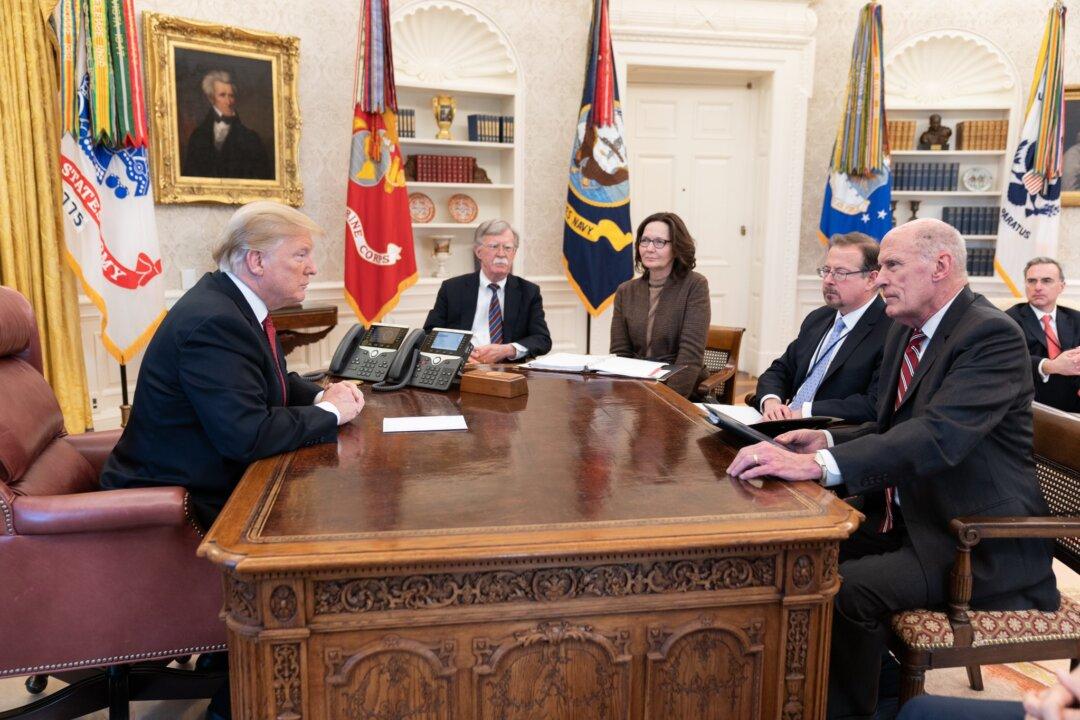President Donald Trump said on Jan. 31 that he and the leaders of American intelligence agencies agree on their assessment of certain major threats to the country.
“Just concluded a great meeting with my Intel team in the Oval Office who told me that what they said on Tuesday at the Senate Hearing was mischaracterized by the media - and we are very much in agreement on Iran, ISIS, North Korea, etc. Their testimony was distorted [by] press,” Trump said in a Jan. 31 tweet.





